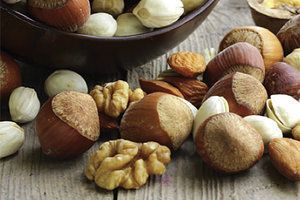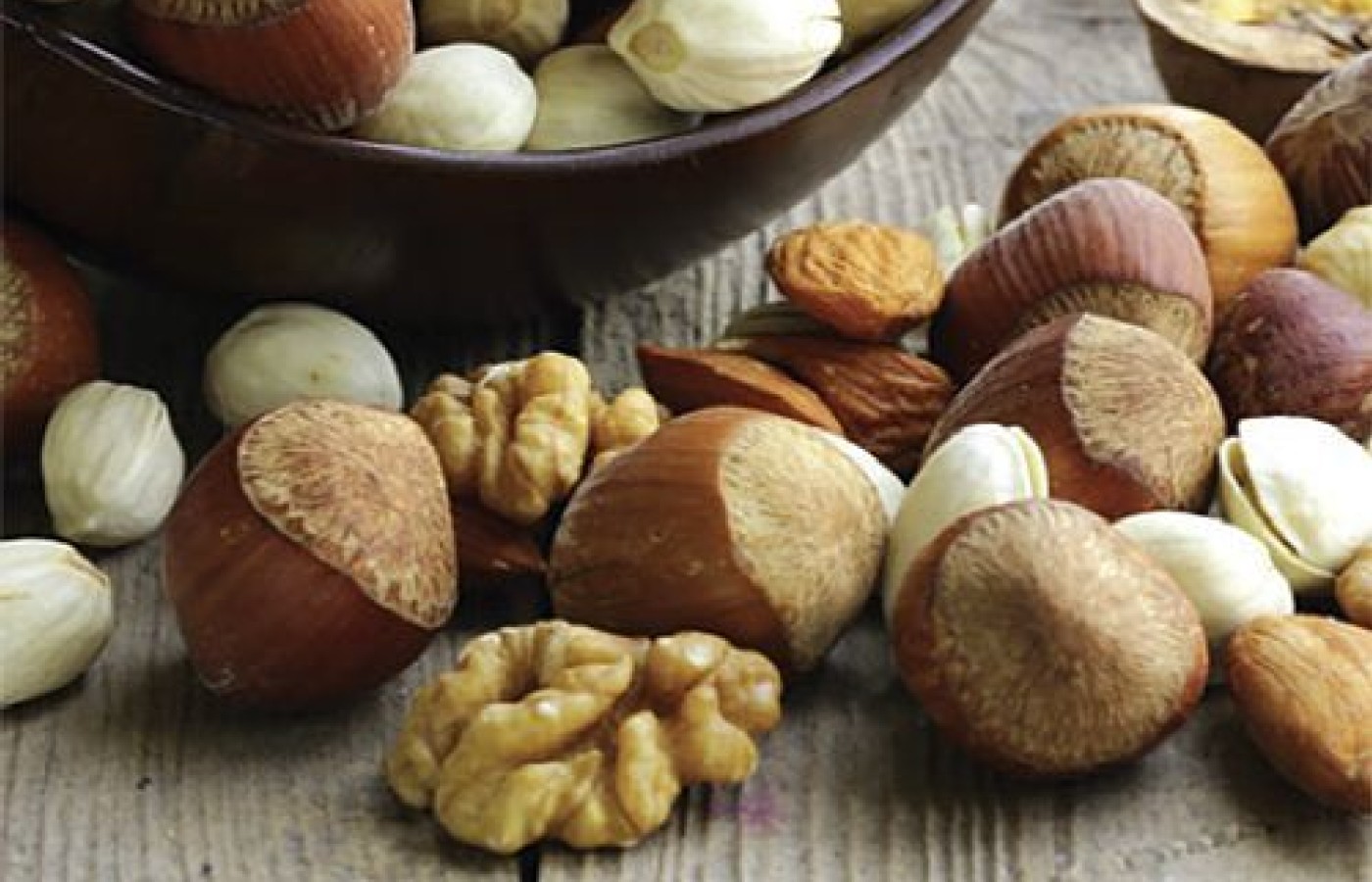Whether you accept it, avoid it or live somewhere in between, insurance coverage has become a defining issue for our profession. Patients increasingly expect to use their benefits, practitioners want to be compensated fairly for their time and expertise, and the system itself remains – at best – fragmented. The encouraging news is that coverage has expanded in meaningful ways. The challenging news is that reimbursement, across the board, remains inadequate.
Nuts Reduce Risk of Heart Disease, Cancer and Other Health Problems
Several recent studies suggest regular consumption of nuts may provide a significant degree of protection against certain types of cancer, heart disease, possibly type 2 diabetes and some neurodegenerative diseases. Let's outline the epidemiological evidence, meta-analysis research and intervention trials published on this subject in the past few years.
The Netherlands Cohort Study
A 2015 prospective study published in the International Journal of Epidemiology found individuals who ate at least 10 grams of nuts or peanuts per day (a handful) had a lower risk of dying from several major causes of death compared to individuals who didn't consume nuts or peanuts. The reduction in mortality was strongest for respiratory disease, neurodegenerative disease and diabetes, followed by cancer and cardiovascular diseases. The protective effects were equal in men and women. In this study, carried out within the Netherlands Cohort Study, which began in 1986, following 120,000 Dutch men and women, 55-69 years old, peanuts showed at least as strong a reduction in mortality risk as tree nuts.
However, no protective effect for peanut butter was found. This may be due to the fact that peanut butter also contains added components like salt and vegetable oils, and in the recent past, trans-fatty acids. The adverse health effects of salt and trans-fatty acids could supersede the protective effects of peanuts in commercial peanut butter products.

The associations between nuts and peanut intake and cardiovascular death in this study confirmed earlier results from American and Asian studies, which focused on cardiovascular disease. Data from the Netherlands Cohort Study found mortality due to cancer, diabetes, respiratory, and neurodegenerative diseases also was lower among consumers of peanuts and nuts.1
Southern Community Cohort Study, Shanghai Women's and Men's Health Study
Another study published in 2015 showed peanut consumption was associated with reduced total mortality and cardiovascular disease mortality in a predominantly low-income black and white population in the U.S., and among Chinese men and women living in Shanghai.
Most of the previous research in this field had assessed mortality mainly on higher-income, white populations. By contrast, this study was the first to suggest all low-income individuals of all races – black, white and Asians alike – may be able to improve their heart health by eating nuts and peanuts. Although some types of nuts are more expensive than others, peanuts remain an affordable choice, even for low-income individuals.
This study combined data from three large, ongoing cohort studies. Participants included more than 70,000 mostly low-income Americans of African and European descent from the Southern Community Cohort Study (SCCS); and more than 130,000 Chinese from the Shanghai Women's Health Study and the Shanghai Men's Health Study.
The data showed peanut consumption was associated with decreased total mortality (17-21 percent reduction), particularly cardiovascular mortality (23-38 percent reduction), when risk reduction was evaluated comparing cardiovascular mortality for the highest quartile intake group compared to the lowest quartile group. The data remained unchanged across all three racial groups, among both men and women, and among low-socioeconomic-status individuals.2
Mayo Clinic Study
Also in 2015, researchers from the Mayo Clinic in Rochester, N.Y., published findings from their systematic review and meta-analysis in Nutrition Reviews, which suggests nut consumption is associated with a decreased risk of certain types of cancer, but not type 2 diabetes. The systematic review and meta-analysis included 36 observational studies (involving 30,708 patients) and assessed the disease-preventive impact of nut consumption, with emphasis on cancer. The study showed nut consumption was inversely associated with risk of colorectal cancer, endometrial cancer, and pancreatic cancer, but not with other types of cancer or type 2 diabetes. Overall, nut intake was associated with a decreased risk of cancer.3
The PREDIMED Study in Spain
This 2013 study published in BMC Medicine found people who ate nuts more than three times a week had an associated reduced risk of dying from cancer and cardiovascular disease compared to non-nut-eaters. Walnuts seemed to provide the greatest level of protection.
The PREDIMED nutrition trial was based in Spain. The objective was to assess primary prevention of cardiovascular disease in more than 7,000 older people (ages 55 to 90). Subjects were randomized to a Mediterranean diet group supplemented with extra-virgin olive oil or nuts, or a control group that followed a low-fat diet.
Overall, nut eaters showed 39 percent lower mortality risk and walnut eaters showed an even more impressive 45 percent lower mortality – meaning they were much less likely to die than non-nut eaters. Subjects who consumed more than three servings (one serving = 28 g or about 2 tablespoons) a week of nuts reduced their risk of death from cardiovascular disease by 55 percent and cancer by 40 percent. A similar effect was demonstrated for walnuts.
The researchers noted that the individuals consuming nuts also had other positive nutrition and health behaviors, which may have contributed to their remarkable outcomes. For example, nut eaters also tended to have a lower BMI (body mass index) and smaller waist circumference. They also were less likely to smoke and were more physically active than those who rarely or never ate nuts. Nut eating was associated with a better diet in general, as these people also consumed more vegetables, fruit and fish.4
Evidence-Based Practice Recommendations
Emerging evidence suggests regular consumption of nuts may be an additional way of reducing risk of cardiovascular disease, some cancers and possibly type 2 diabetes and neurodegenerative diseases. The evidence appears to be quite impressive for cardiovascular disease and all-cause mortality. In the past, we cautioned patients about eating nuts because they are quite high in total fat, which may contribute to weight gain and obesity. The trick appears to be controlling the quantity consumed – getting enough to acquire the protective effects, but not so much that it promotes weight gain.
The American Heart Association recommends eating four servings of unsalted, unoiled nuts a week. A serving size is defined as a small handful or 1.5 ounces of whole nuts, or 2 tablespoons of natural nut butter (unprocessed).2
Peanuts and tree nuts both contain various compounds such as monounsaturated and polyunsaturated fatty acids (including alpha-linolenic acid – an omega-3 that is quite high in walnuts), various vitamins, fiber, antioxidants, and other bioactive compounds (such as arginine) that may explain their purported protective effects. Some of these effects are likely related to their antioxidant, anti-inflammatory and endothelial function-maintaining properties.1-2,4
Based on the emerging research, I suggest you encourage patients to eat nuts as a healthy alternative snack to other undesirable "chippy-dippy" types of snacks (e.g. potato chips, nacho chips etc.). Even for lower-income patients, peanuts remain affordable and provide some additional protein to the diet.
It appears including walnuts in a person's nut intake may be particularly desirable, if budget allows for it. Walnuts are particularly rich in protective nutrients and are associated with positive health outcomes in many studies. The protective effects of walnuts may even include a reduction in risk of breast and prostate cancer, according to epidemiological studies and intervention trials with mice.
In a recent mice study published in 2013 in Cancer Investigation, researchers injected immune-deficient mice with human prostate cancer cells. Within three to four weeks, tumors typically start to grow in a large number of these mice. Mice given a walnut-enriched diet showed a remarkable reduction in tumor development. More specifically, three of 16 mice (18 percent) consuming the walnut-enriched diet developed prostate tumors, compared with 14 of 32 mice (44 percent) on the non-walnut diet.
Additionally, the final average tumor size in the walnut-fed mice was roughly one-fourth the average size of the prostate tumors that developed in the mice eating the control diet.5 The amount of walnut feed consumed by the mice translates to about 2 ounces, or a handful of walnuts per day, in human consumption equivalents – a reasonable, attainable amount.
Given the emerging studies suggesting nut consumption may help reduce risk of major health conditions, as well as all-cause mortality, I believe it is time to encourage patients to consume at least a handful of nuts (particularly walnuts) per day as a part of a health-optimization program.
References:
- van den Brandt PA, Schouten LJ. Relationship of tree nut, peanut, and peanut butter intake with total and cause-specific mortality: a cohort study and meta-analysis. International Journal of Epidemiology, June 2015 (epub ahead of print).
- Luu HN, Blot WJ, Xiang YB, et al. Prospective evaluation of the association of nut / peanut consumption with total and cause-specific mortality. JAMA Internal Medicine, 2015 May;175(5):755-66.
- Wu L, Wang Z, Zhu J, et al. Nut consumption and risk of cancer and type 2 diabetes: a systematic review and meta-analysis. Nutrition Reviews, epub June 16, 2015.
- Guasch-Ferré M, Bullo, Angel Martinez-Gonzalez M, et al. Frequency of nut consumption and mortality risk in the PREDIMED nutrition intervention trial. BMC Medicine, 2013;11:164.
- Reiter RJ, Tan DX, Manchester LC, et al. A walnut-enriched diet reduces the growth of LNCaP human prostate cancer xenografts in nude mice. Cancer Investigation, 2013;31(6):365.



